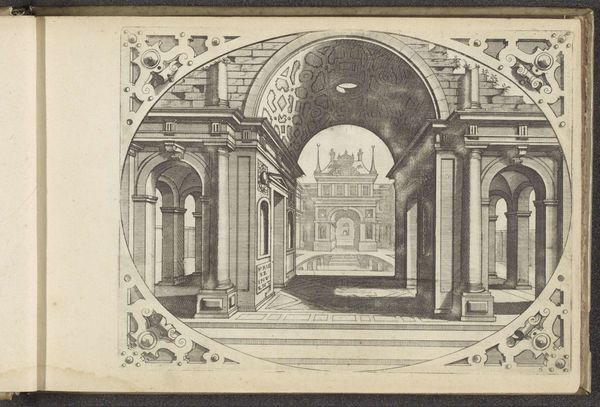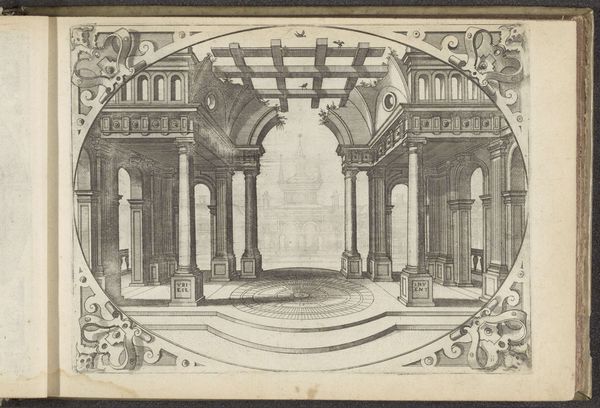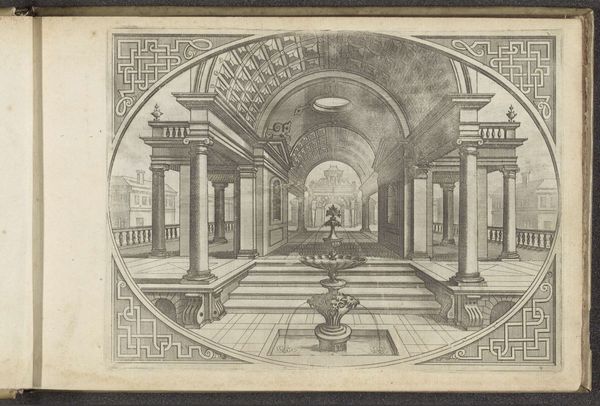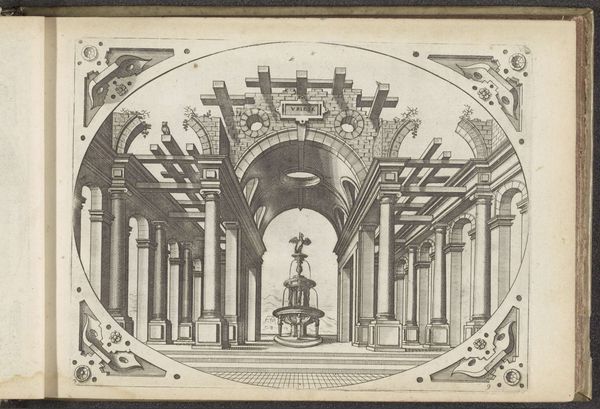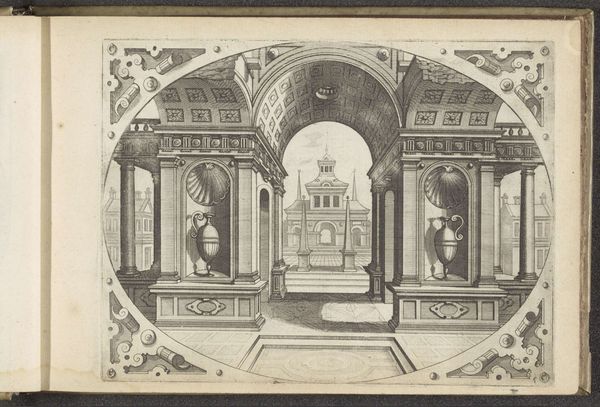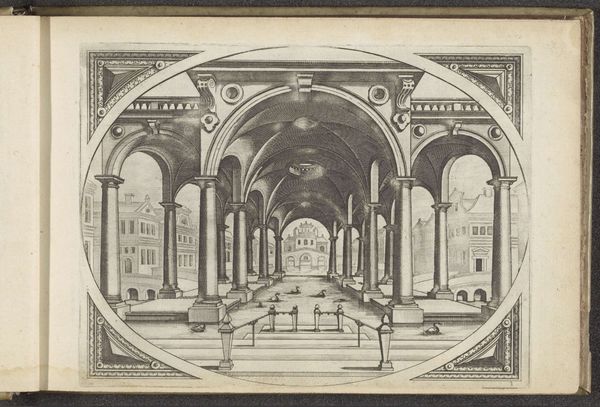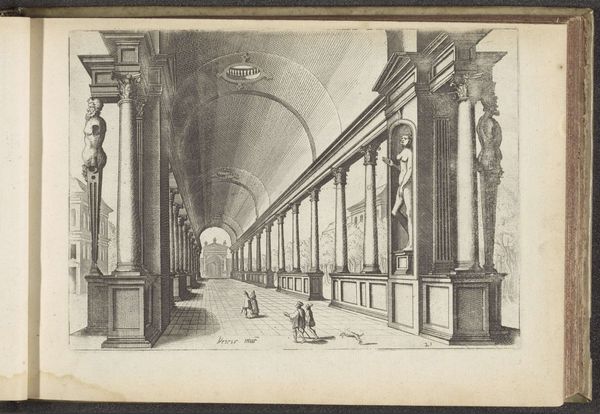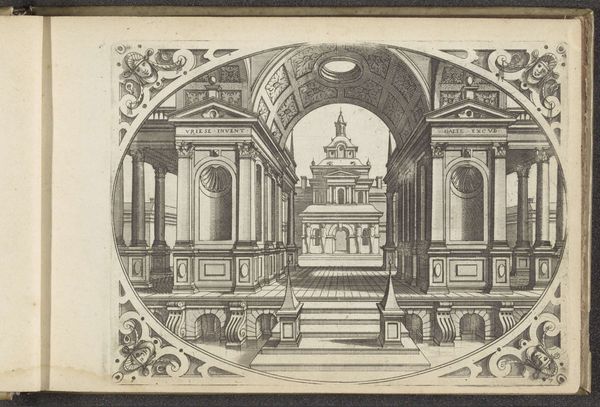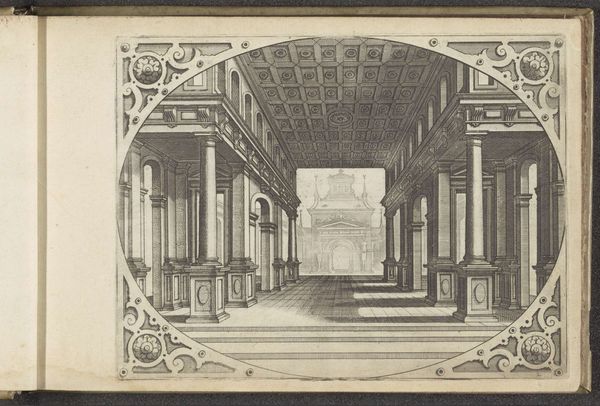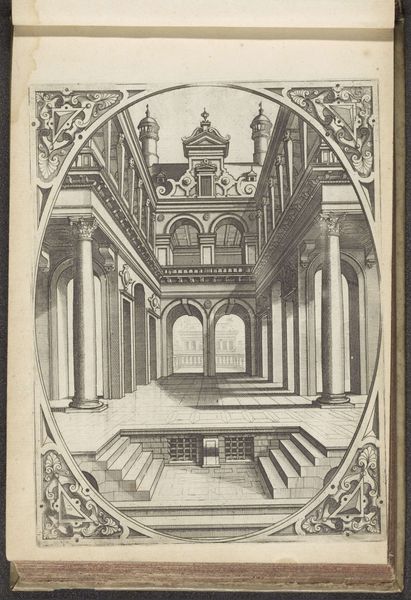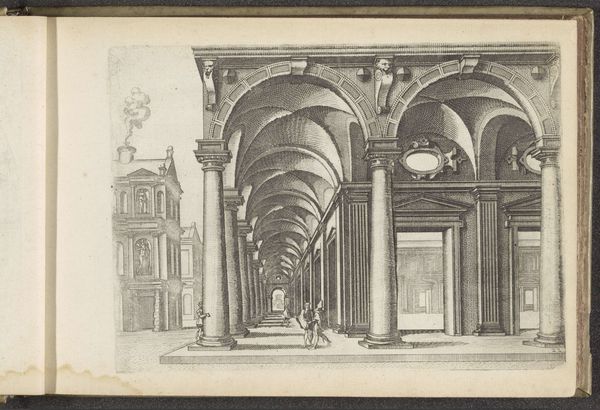
Zuilengalerij met een geruïneerd gewelf en een waterput 1560 - 1601
0:00
0:00
johannesoflucasvandoetechum
Rijksmuseum
drawing, ink, engraving, architecture
#
drawing
#
pen drawing
#
perspective
#
form
#
ink
#
line
#
cityscape
#
genre-painting
#
northern-renaissance
#
engraving
#
architecture
Dimensions: height 162 mm, width 214 mm
Copyright: Rijks Museum: Open Domain
Curator: Take a moment to consider "Zuilengalerij met een geruïneerd gewelf en een waterput", or in English, "Column Gallery with a Ruined Vault and a Well." This pen and ink drawing, dating from around 1560-1601, is attributed to Johannes or Lucas van Doetechum and it's currently housed in the Rijksmuseum. Editor: It’s incredibly evocative, isn't it? Immediately I sense a hushed atmosphere, a kind of beautiful decay frozen in time. The way the light plays with those ruined arches... it’s like a memory of grandeur. Curator: Precisely! The ruined vault certainly speaks of lost glory, of time's relentless march, and is accentuated by that almost too-perfectly-rendered well. Editor: The well, centrally placed, strikes me as a symbol – the source of life and perhaps even rebirth amidst all the decay. Water sustains, even when the structure crumbles around it. It’s that cyclical narrative, wouldn’t you say? Curator: I agree. In Renaissance imagery, wells frequently appear as symbols of purity or revelation – sometimes even related to biblical allusions. I wonder if the artist was aiming to contrast classical ideals of architectural perfection with earthly impermanence, all through symbolic forms. Editor: It definitely pulls you in with that forced perspective. I mean, the lines all converge, focusing your gaze onto the architecture around the well, and it seems to amplify that quiet feeling, which you only get from observing something from a far away perspective. The emptiness in the building allows the viewer to create a personal memory in that specific place, Curator: And then we also must take note of how the image is framed in the ornamental oval. With this intentional boundary, we focus on how meaning is being produced, even across vast expanses of history and culture. Editor: Exactly! Looking at the architecture of "Column Gallery with a Ruined Vault and a Well" makes us reflect on what structures—be they material or symbolic—we decide to conserve. It is like seeing past futures through the symbolic narrative in art. Curator: It really offers so many points of reflection, centuries later.
Comments
No comments
Be the first to comment and join the conversation on the ultimate creative platform.
